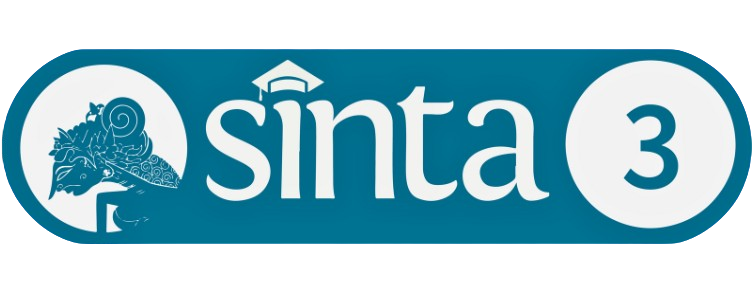Faktor Determinan Perilaku Image-based Sexual Abuse: Integrative Review
Unduhan
Seiring dengan majunya teknologi, turut muncul kejahatan seksual yang difasilitasi teknologi, salah satunya Image-Based Sexual Abuse (IBSA) yang marak terjadi secara internasional maupun di Indonesia. Berbagai studi empiris telah dilakukan untuk meneliti faktor-faktor penyebab perilaku IBSA dan hasil yang ditemukan sangat beragam. Oleh karena itu, penulis membuat studi integrative review untuk memetakan faktor determinan perilaku IBSA. Literatur-literatur yang ditelaah oleh penulis diambil dari dua database yaitu Scopus dan Clarivate Web of Science. Dari 996 literatur yang teridentifikasi, didapatkan 13 literatur yang relevan untuk ditelaah lebih lanjut. Faktor determinan yang berhasil dipetakan dalam studi ini adalah karakteristik demografis, attitudinal, dan experiential, dark personality traits, toxic online disinhibition, konsumsi pornografi daring, serta norma gender dan interaksi homososial. Meski temuan studi-studi sebelumnya sangat beragam, tetapi terdapat beberapa temuan faktor determinan yang tidak konsisten. Maka itu, penelitian selanjutnya dapat meneliti lebih lanjut terkait inkonsistensi tersebut.
Bates, S. (2017). Revenge Porn and Mental Health: A Qualitative Analysis of the Mental Health Effects of Revenge Porn on Female Survivors. Feminist Criminology, 12(1), 22–42. https://doi.org/10.1177/1557085116654565
Bird, S. R. (1996). WELCOME TO THE MEN'S CLUB: Homosociality and the Maintenance of Hegemonic Masculinity. Gender & Society, 10(2), 120–132. https://doi.org/10.1177/089124396010002002
D'Abreu, L. C. F., & Krahé, B. (2014). Predicting sexual aggression in male college students in Brazil. Psychology of Men & Masculinity, 15(2), 152–162. https://doi.org/10.1037/a0032789
Flynn, A., Powell, A., Scott, A. J., & Cama, E. (2022). Deepfakes and Digitally Altered Imagery Abuse: A Cross-Country Exploration of an Emerging form of Image-Based Sexual Abuse. The British Journal of Criminology, 62(6), 1341-1358. https://doi.org/10.1093/bjc/azab111
Henry, N., & Flynn, A. (2019). Image-Based Sexual Abuse: Online Distribution Channels and Illicit Communities of Support. Violence Against Women, 25(16), 1932–1955. https://doi.org/10.1177/1077801219863881
Henry, N., Flynn, A., & Powell, A. (2019). Image-based sexual abuse: Victims and perpetrators. Trends & Issues in crime and criminal Justice, 572.
Howard-Merrill, L., Wamoyi, J., Nyato, D., Kyegombe, N., Heise, L., & Buller, A. M. (2022). ‘I trap her with a CD, then tomorrow find her with a big old man who bought her a smart phone'. Constructions of masculinities and transactional sex: A qualitative study from North-Western Tanzania. Culture, Health & Sexuality, 24(2), 254–267. https://doi.org/10.1080/13691058.2020.1832259
Karasavva, V., & Forth, A. (2021). Personality, Attitudinal, and Demographic Predictors of Non-consensual Dissemination of Intimate Images. Journal of Interpersonal Violence, 37(21-22). https://doi.org/10.1177/08862605211043586
Krebbekx, W. (2018). Making sex, moving difference: An ethnography of sexuality and diversity in Dutch schools [Disertasi, Amsterdam Institute for Social Science Research (AISSR)].
LBH Apik Jakarta. (2021). Kekerasan Terhadap Perempuan Meningkat, Negara Wajib Memberikan Ruang Aman: Catatan Akhir Tahun LBH Apik Jakarta Berdasarkan Pengalaman Penanganan Kasus dan Advokasi 2021. https://drive.google.com/file/d/184JB9O9OUFPSkjvgJ90e9oIVfRoYN-7x/view
Maas, M. K., Cary, K. M., Clancy, E. M., Klettke, B., McCauley, H. L., & Temple, J. R. (2021). Slutpage Use Among U.S. College Students: The Secret and Social Platforms of Image-Based Sexual Abuse. Archives of Sexual Behavior, 50(5), 2203–2214. https://doi.org/10.1007/s10508-021-01920-1
Mandau, M. B.H (2020). Homosocial positionings and ambivalent participation: A qualitative analysis of young adults' non-consensual sharing and viewing of privately produced sexual images. MedieKultur: Journal of Media and Communication Research, 36(67), 055–075. https://doi.org/10.7146/mediekultur.v36i67.113976
Naezer, M., & van Oosterhout, L. (2021). Only sluts love sexting: Youth, sexual norms and non-consensual sharing of digital sexual images. Journal of Gender Studies, 30(1), 79–90. https://doi.org/10.1080/09589236.2020.1799767
Office of The Esafety Commissioner. (2017). Image-based Abuse National Survey: Summary Report. https://www.esafety.gov.au/sites/default/files/2019-07/Image-based-abuse-national-survey-summary-report-2017.pdf
Patrick, K., Heywood, W., Pitts, M. K., & Mitchell, A. (2015). Demographic and behavioural correlates of six sexting behaviours among Australian secondary school students. Sexual Health, 12(6), 480. https://doi.org/10.1071/SH15004
Peters, M. D. J., Marnie, C., Tricco, A. C., Pollock, D., Munn, Z., Alexander, L., McInerney, P., Godfrey, C. M., & Khalil, H. (2020). Updated methodological guidance for the conduct of scoping reviews. JBI Evidence Synthesis, 18(10), 2119–2126. https://doi.org/10.11124/JBIES-20-00167
Pina, A., Bell, A., Griffin, K., & Vasquez, E. (2021). Image Based Sexual Abuse proclivity and victim blaming: The role of dark personality traits and moral disengagement. Oñati Socio-Legal Series, 11(5), 1179–1197. https://doi.org/10.35295/osls.iisl/0000-0000-0000-1213
Pina, A., Holland, J., & James, M. (2017). The Malevolent Side of Revenge Porn Proclivity: Dark Personality Traits and Sexist Ideology. International Journal of Technoethics, 8(1), 30–43. https://doi.org/10.4018/IJT.2017010103
Powell, A., Henry, N., Flynn, A., & Scott, A. J. (2019). Image-based sexual abuse: The extent, nature, and predictors of perpetration in a community sample of Australian residents. Computers in Human Behavior, 92, 393–402. https://doi.org/10.1016/j.chb.2018.11.009
Powell, A., Scott, A. J., Flynn, A., & Henry, N. (2020). Image-based sexual abuse: An international study of victims and perpetrators. https://doi.org/10.13140/RG.2.2.35166.59209
Powell, A., Scott, A. J., Flynn, A., & McCook, S. (2022). Perpetration of Image-Based Sexual Abuse: Extent, Nature and Correlates in a Multi-Country Sample. Journal of Interpersonal Violence, 088626052110722. https://doi.org/10.1177/08862605211072266
SAFEnet. (2022). Laporan Situasi Hak-hak Digital Indonesia 2021: Pandemi Memang Terkendali, Tetapi Represi Digital Terus Berlanjut. https://awaskbgo.id/wp-content/uploads/2022/03/Laporan-Situasi-Hak-Digital-2021-Part-KBGO.pdf
Setty, E. (2019). A Rights-Based Approach to Youth Sexting: Challenging Risk, Shame, and the Denial of Rights to Bodily and Sexual Expression Within Youth Digital Sexual Culture. International Journal of Bullying Prevention, 1(4), 298–311. https://doi.org/10.1007/s42380-019-00050-6
Stanley, N., Barter, C., Wood, M., Aghtaie, N., Larkins, C., Lanau, A., & Överlien, C. (2018). Pornography, Sexual Coercion and Abuse and Sexting in Young People's Intimate Relationships: A European Study. Journal of Interpersonal Violence, 33(19), 2919–2944. https://doi.org/10.1177/0886260516633204
Torraco, R. J. (2005). Writing Integrative Literature Reviews: Guidelines and Examples. Human Resource Development Review, 4(3), 356–367. https://doi.org/10.1177/1534484305278283
Vera-Gray, F., McGlynn, C., Kureshi, I., & Butterby, K. (2021). Sexual violence as a sexual script in mainstream online pornography. The British Journal of Criminology, 61(5), 1243-1260.
Walker, K., Sleath, E., Hatcher, R. M., Hine, B., & Crookes, R. L. (2021). Nonconsensual Sharing of Private Sexually Explicit Media Among University Students. Journal of Interpersonal Violence, 36(17–18), NP9078–NP9108. https://doi.org/10.1177/0886260519853414
Zhong, L. R., Kebbell, M. R., & Webster, J. L. (2020). An exploratory study of Technology-Facilitated Sexual Violence in online romantic interactions: Can the Internet's toxic disinhibition exacerbate sexual aggression? Computers in Human Behavior, 108, 106314. https://doi.org/10.1016/j.chb.2020.106314
Hak Cipta (c) 2023 Viona Gunawan

Artikel ini berlisensi Creative Commons Attribution 4.0 International License.
BRPKM adalah terbitan berkala dengan akses terbuka Creative Commons Attribution 4.0 International (CC-BY 4.0) sehingga hak cipta tetap berada di tangan penulis.
Dengan lisensi ini, siapapun berhak menggunakan informasi dan melakukan re-distribusi konten yang dimuat dalam jurnal ini untuk kepentingan apapun, termasuk kepentingan komersial. Hal tersebut dapat dilakukan selama memenuhi dua kondisi, yaitu; (1) anda harus memberikan atribusi dengan mengutip sumber tautan aslinya, dan menyatakan apabila ada perubahan yang dilakukan; dan (2) anda tidak dapat menggunakan ketentuan hukum atau sarana kontrol teknologi yang secara hukum dapat membatasi orang lain untuk melakukan hal-hal yang diizinkan oleh lisensi ini.
Redaksi jurnal tidak akan meminta penulis untuk melakukan persetujuan transfer hak cipta atas semua naskah yang diterbitkan.










